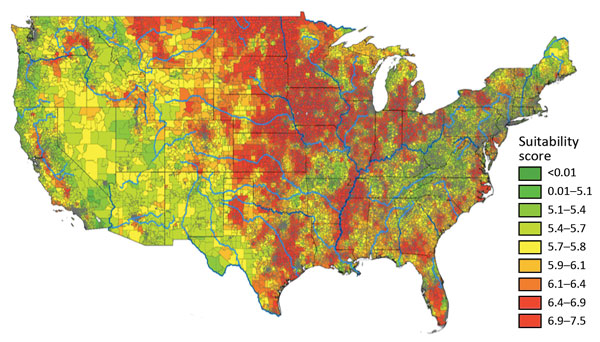Geographic range of H. capsulatum expands in US

The endemic range of Histoplasma capsulatum in the United States has spread into the upper Missouri River basin, with cases of histoplasmosis occurring as far north as Montana, researchers reported recently in Emerging Infectious Diseases.
The researchers updated decades-old prevalence maps of H. capsulatum to give health care providers a more accurate idea of where infections are likely to occur.
“Maps of Histoplasma capsulatum infection prevalence were created 50 years ago; since then the environment, climate and anthropologic land use have changed drastically,” Stephen A. Deppen, PhD, assistant professor of thoracic surgery at Vanderbilt University Medical Center, and colleagues wrote. “Recent outbreaks of acute diseases in Montana and Nebraska suggest shifts in geographic distribution, necessitating updated prevalence maps.”
A 1969 map showed that H. capsulatum was most prevalent in the Mississippi and Ohio River basins, according to Deppen and colleagues. However, “since then the environment, climate and anthropogenic land use have changed drastically,” they wrote.

To create a new map, Deppen and colleagues combined satellite imagery incorporating land cover use, distance to water and soil pH to create a weighted overlay geographic suitability model for Histoplasma. They compared the map with state-level histoplasmosis incidence data from a 5% sample from the CMS.
“When compared with the state-based [CMS] data, the predictive accuracy of the suitability score-predicted states with high and mid-to-high histoplasmosis incidence was moderate,” they wrote.
According to the CDC, Histoplasma — a fungus —lives in the environment, particularly in soil containing large amounts of bird or bat droppings. The researchers’ model confirmed reports that the preferred soil environments for Histoplasma had expanded in the upper Missouri River region, which they said “probably reflects changes in climate and human land use with increased cultivation in that region and urbanization of other regions of the country.”
“Ideal conditions for the infectious fungus have spread into the Missouri River Valley as far north as Montana,” Deppen told Infectious Disease News. “The upper plains states should be added to the Mississippi and Ohio River valley regions as endemic exposure areas when considering a possible histoplasmosis diagnosis.”
Deppen and colleagues noted that the model could improve maps of other pathogens associated with geographic-specific vectors.
“Our suitability map may provide a detailed prediction of the risk for acute histoplasmosis infection, including areas of new endemicity,” they concluded. “Accurate mapping of [Histoplasma] exposure may also aid in the interpretation of chest images, particularly in the context of lung cancer screening programs.” – by Bruce Thiel
Disclosures: Deppen reports no relevant financial disclosures. Please see the study for all other authors’ relevant financial disclosures.
Reference: Edwards LB, et al. Am Rev. Respir Dis. 1969;99(Spppl):1-132.
